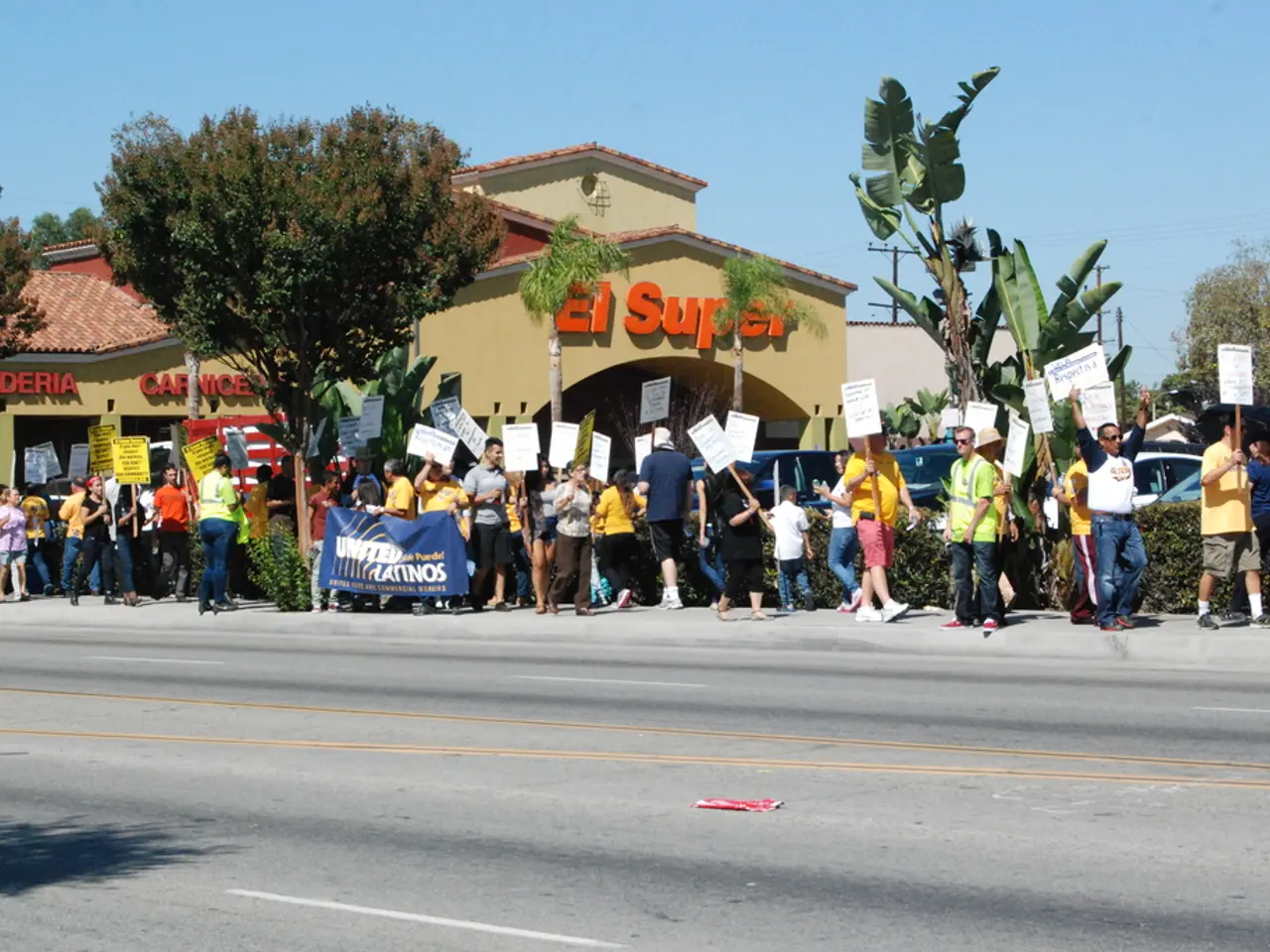Political Engagement through Online Means: Examining the Influence of Digital Activism within Political Spheres
=====================================================
Digital Activism has become an integral part of the political landscape, leveraging social media and other online platforms to reach a broad audience and significantly impact public discourse. This modern form of activism can influence election outcomes by shaping voter perceptions and mobilizing communities.
In recent years, digital Activism has evolved from a niche practice to a mainstream campaign strategy. Campaigns now use digital tools to engage directly with voters, mobilize activists, and craft tailored messages that resonate with specific audiences. This shift has transformed campaigning into a more scientific practice that relies on data and message tailoring.
One of the key advantages of digital Activism is its ability to facilitate voter mobilization and engagement. Platforms like social media allow for real-time communication, direct access to large and diverse audiences, and creative grassroots activism. Movements such as Black Lives Matter demonstrate how viral content and hashtags can quickly mobilize public support and influence policy changes, exemplifying the speed and scale digital activism imparts to political efforts.
Another significant aspect of digital Activism is its targeting and personalization capabilities. Data analytics and targeted online advertising enable campaigns to segment voters by demographics, behavior, and interests for tailored messaging. This approach maximizes message effectiveness in digitally connected regions, making digital tools crucial for successful voter targeting and persuasion efforts.
However, the success of digital strategies depends heavily on clear, concise messaging and integration with offline efforts. Some high-profile campaigns relying mostly on digital-first strategies failed to convert engagement into votes due to messaging issues. Additionally, digital divides mean that underserved regions may not benefit equally from digital campaigning, requiring traditional outreach methods to maintain engagement.
The changing political landscape indicates that digital activism tools will play an even greater role in future political successes. Upcoming elections will see younger voters—millennials and Gen Z—who spend extensive time on social media platforms like TikTok and Instagram. Campaigns that effectively utilize these platforms can capture this critical demographic.
In summary, digital activism tools have become indispensable for modern political campaigns, advancing voter engagement, message precision, and campaign responsiveness. However, their effectiveness hinges on strategic message crafting, bridging digital divides, and complementing online efforts with offline grassroots organizing.
For those interested in getting involved in digital Activism, resources are available. One way to get in touch is by filling out an online form or giving a call at 91 9848321284. Digital Activism is a powerful tool for bringing attention to important issues and making a difference. Key tools used in digital Activism for politics include social media platforms, email campaigns, online petitions, hashtags, live streaming, chatbots, and digital fundraising platforms.
Best practices for successful digital Activism in politics include clear goals, consistent messaging, multimedia content, proactive engagement, and regular performance monitoring. By following these principles, digital Activism can continue to be a force for positive change in the political sphere.
[1] Lazer, D., Baum, M., Benkler, Y., & Tucker, C. R. (2018). The science of the crowd: why good algorithms make smart citizens. Princeton University Press.
[2] Karpf, D. (2016). The moveonline: political communication in an age of social media. Oxford University Press.
[3] Papacharissi, Z. (2010). Networked politics: citizens, ethnicity, and new media in Europe. Routledge.
[4] Tufekci, Z. (2017). Twitter and Tear Gas: The Power and Fragility of Networked Protest. Yale University Press.
- Politicians are increasingly leveraging data analytics and targeted online advertising, with social media platforms and email campaigns becoming essential tools for shaping voter perceptions and mobilizing communities.
- As the political landscape evolves, resources for digital activism are available, offering opportunities for individuals to make a difference and bring attention to important issues.
- In their strategy, digital activists must focus on clear, concise messaging and bridge digital divides to ensure that all regions are engaged, complementing online efforts with offline grassroots organizing.
- The success of digital strategies in politics might depend on the strategic use of hashtags, live streaming, chatbots, and digital fundraising platforms; however, their effectiveness can be maximized through regular performance monitoring and proactive engagement.
- Influential texts like "The Science of the Crowd" (Lazer, Baum, Benkler, & Tucker, 2018), "The Moveonline" (Karpf, 2016), "Networked Politics" (Papacharissi, 2010), and "Twitter and Tear Gas" (Tufekci, 2017) shed light on modern digital activism and its ramifications on politics and society.





